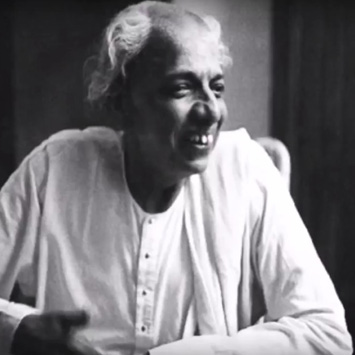
When I was young, good music was heard only over the radio and from rare records that one possessed. The moments to cherish were when your favourite musician came on the radio unexpectedly. When MD Ramanathan’s rare record was played, my father would raise his hand to silence all of us, as we listened to his rendering in Nilambari or Reethigowla. I would have included MDR, as he was known to his fans, in my series of forgotten musicians, but for the fact that his following today is much more than what it was when he died. If Ramanathan were alive, he would have been 97 today, the 20th May 2020.
MDR fans would have knit their brows in disagreement, if I had included him in a list of forgotten musicians. However, visitors to his music pages in the public domain are relatively few. Fewer still are those who comment on his music. Another reason for his being considered forgotten is that he left behind just two records, one LP and one EP. And this was all that one got to hear of him in my younger days. One of the two songs that first caught my imagination was his rendering in the EP record of Tyagaraja’s composition, Rama Rama Rama Rama Kothanda Rama, in Raga Nilambari (see here). On the other side was Paripalaya in Raga Reetigowla (see here). These recordings were played by the local station of All India Radio. Once in a while, there was a live concert.
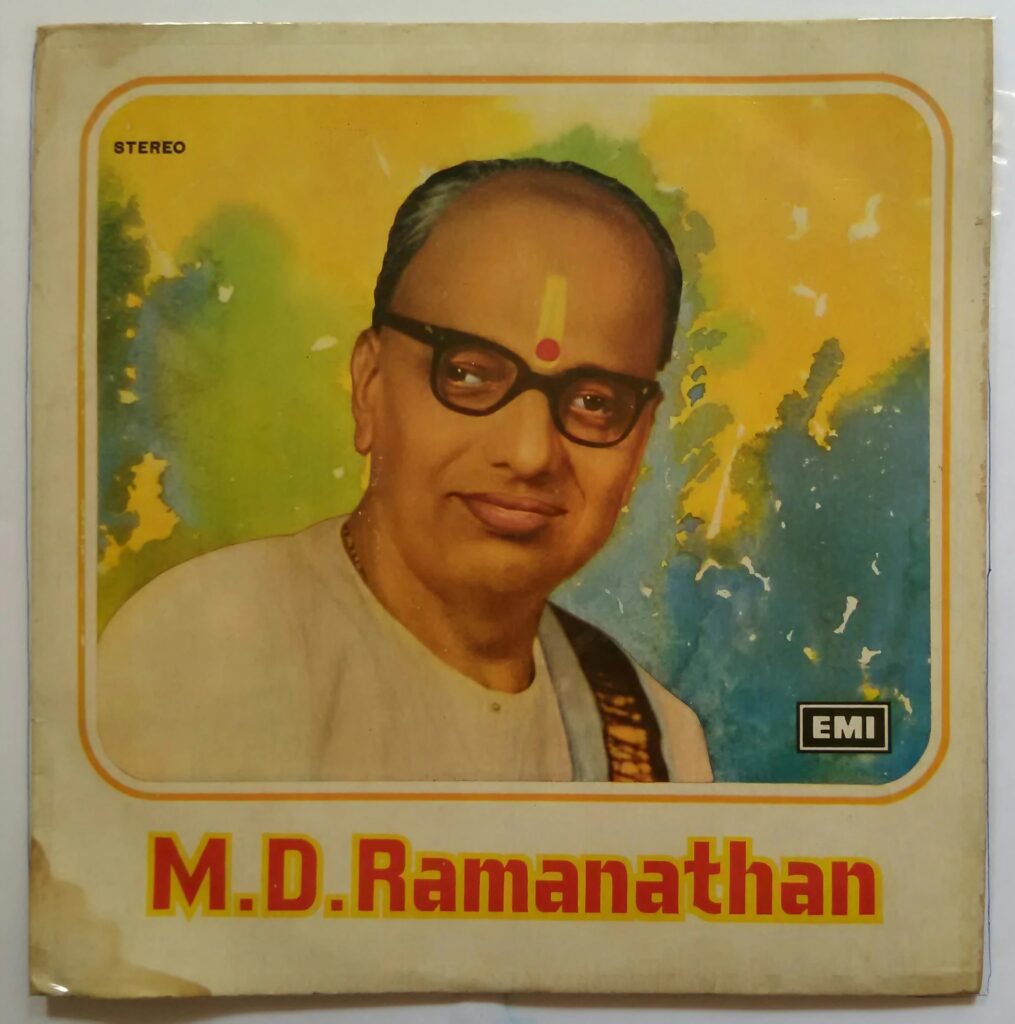
That was till my father one day proudly brought home a new LP record of Ramanathan. On one side was Tyagaraja’s Giripai in Raga Sahana which would have been played at least a thousand times at home. This was followed by a Thillana in Kapi composed by Ramanathan himself in his pen name, Sri Varada Dasa. On the other side were Dikshitar’s Maha Ganapathim in Nattai, Tyagaraja’s Samaja Varagamana in Hindolam, and Ramanathan’s own Hariyum Haranum in Atana. And then I got to attend my first and only Ramanathan concert in 1981. More about this later. He was also a regular at the Navaratri festival at the Padmanabha Swamy Temple, Trivandrum.
Ramanathan was once asked in an interview why there were only two records of his available. He replied, quite disarmingly, that they came only for two records, and did not come thereafter. In other words, he was not one of those who chased down record companies to get new records made. It was also an indicator that his fan following in those days was very low. He was having a cup of coffee, when he was asked this question. He went on to add that listening to a live concert was like having fresh coffee, lifting up his cup, while listening to a record was like having coffee from a flask.
The M in MDR stands for Manjapra, which was in then Cochin State. But, he grew up in Palakkad in Malabar District of then Madras Presidency. It was here that he had his schooling and college education, graduating in Physics from the Government Victoria College. Here is an excerpt of an interview given by Ramanathan in December 1977 to Amy Catlin, now a Professor of Ethnomusicology at UCLA, and Fredric Lieberman (now Late), a former Professor of Ethnomusicology at the University of California Santa Cruz. Ramanathan reveals that his father Devesa Bhagavathar, who was also a musician like his own father, wanted Ramanathan to take up a government job. But, Ramanathan decided that music was his calling.
He was auditioned and selected to become the only student in the first batch of the Sangeetha Shiromani course started in 1944 by Rukmini Devi Arundale at Kalakshetra in Madras. Tiger Varadachariar was brought from Annamalai University to teach and head the Music Department. Tiger was one of the stalwarts of Carnatic music. He was only the fourth recipient, in 1932, of the Sangeetha Kalanidhi award instituted by the Madras Music Academy.
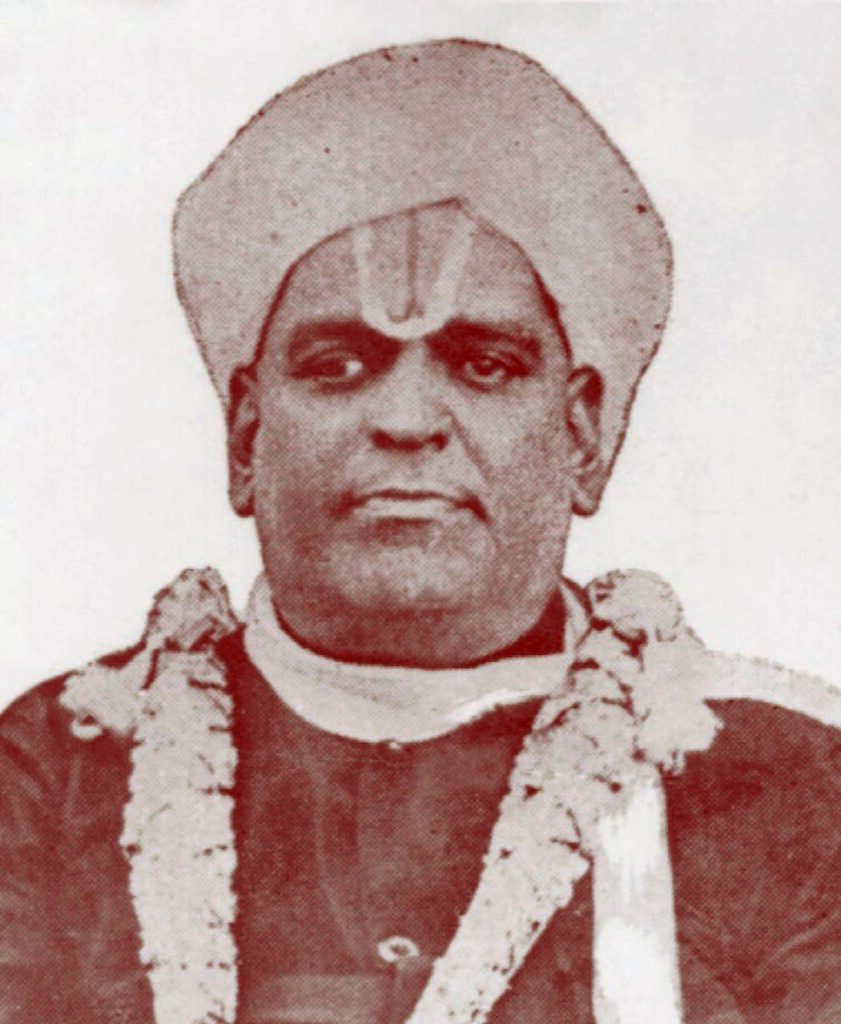
Hardly any good recording of Tiger Varadachariar is available now. But, it was his training under Tiger (the nickname owed to his mannerisms on stage) that shaped his musical personality. But, at the base was his initial exposure to Kathakali music, which seemed to have given his music a unique identity. His sonorous, deep and resounding voice and style were characterised by a slow paced singing in very low sruthi. So low that, I believe, Palghat T.S. Mani Iyer, the mridangam maestro, called it “paataala sruthi” (paatala meaning hell), and would jocularly refuse to accompany Ramanathan, as it was difficult for a mridangist to accompany a musician singing at that level.
The close relationship between the guru and shishya lasted till the guru’s death in 1950. Ramanathan would succeed his guru in teaching at Kalakshetra, later on heading the music department. Ramanathan not only inherited Tiger’s unique style of singing, and mannerisms, but also his squint, say some critics. He was so devoted to his guru that all his 300-odd compositions had the mudra (or mark) “Sri Varada Dasa”, or servant of Varada, his guru.
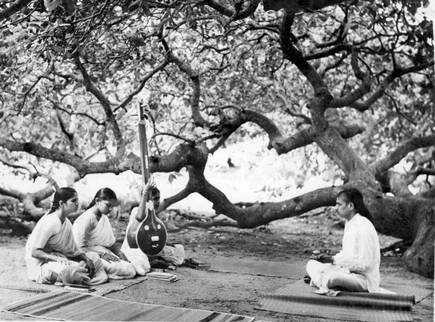
D. Appukuttan Nair, former Chief Engineer in Kerala State, and renowned authority on both temple arts and temple architecture, was the architect of the Koothambalam of Kalakshetra. In this connection, he had worked closely with Rukmini Devi and knew Ramanathan quite well. As he was my father’s friend and colleague, I had several occasions to discuss temple arts and temple architecture with Appukuttan Nair, who was a great conversationalist with a sparkling wit laced with sarcasm. I recall below two anecdotes about Ramanathan as told to me by Appukuttan Nair.
The first relates to the recordings of Ramanathan. Kalakshetra, where Ramanathan spent almost all his singing life, as a student and teacher, had a strict rule that no concerts will be allowed to be recorded. This was strictly enforced by Rukmini Devi. Foreigners in particular were subjected to a more thorough checking. When Ramanathan suddenly passed away in 1984 at the relatively young age of 61, it suddenly dawned on Kalakshetra that with him an entirely unique style of singing had vanished. With no recordings of Ramanathan available at Kalakshetra, Rukmini Devi had a notice put up requesting those with his private recordings to share them with Kalakshetra.
The second anecdote relates to a concert given by Ramanathan in 1981. That was the first year that the Kerala Government decided to celebrate Onam in a big way. There were festivities in Trivandrum alone over ten days with events happening simultaneously in different venues across Trivandrum, and other cities. The person in charge of the overall arrangements was my father’s batchmate who thought it best to consult my father to fix the Carnatic music events. On my father’s suggestion, it fell on Appukuttan Nair to fix Ramanathan as one of the singers.
Ramanathan was initially reluctant to come. But, on Appukuttan Nair’s insistence, Ramanathan decided to up the stakes to a level where he thought he will be spared. He finally told Appukuttan Nair that he will come only if he is paid Rs. 2000 – while saying “randaaaaayiram” for two thousand in his mix of Malayalam and Tamil, he elongated the “aaaa” to emphasise the enormity of the amount. The same year KJ Jesudas was being paid Rs. 30,000. This incident was a reminder as to the simplicity of the man, who was completely out of touch with day to day realities, having spent most of his life within Kalakshetra. It was also an indicator as to how he was probably being short changed by the concert organisers over the years. Sangeetha Kalanidhi Dr. T.V. Gopalakrishnan, long-time friend of Ramanathan, reveals in this Ramanathan memorial lecture (which is in a mix of Malayalam, Tamil, and English) that Ramanathan, as Principal of Kalakshetra was being paid only Rs. 500 per month, a pittance even in the early 1990s. Not only was Ramanathan’s demand agreed to, but the organisers took pity on him and paid him Rs. 4,000, double of what was demanded.
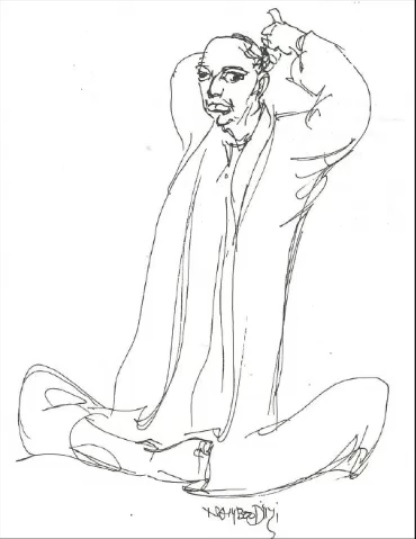
That concert in 1981, at the Karthika Thirunal theatre, was the only one of Ramanathan that I attended. Lalgudi G. Jayaraman accompanied on the violin. On the mridangam was either Guruvayur Dorai or Vellore Ramabhadran. MDR has a very pronounced squint. And it was not clear in which direction he was looking. He could not stand the glare of the lights, and it took some time before he got the light technicians to switch off the glaring lights focussed on him. When he started the concert, with a long drawl followed by an equally long pause, Lalgudi repeated the same on his violin, and turned to the audience with a wide smile.
I don’t remember what compositions Ramanathan sang that day. But, what I still recall is the mangalam. Mangalam is the last piece sung in a Carnatic music concert. It is an invocation to God, a kind of welcome. Usually set in Raga Madhyamavati, it is also a prayer seeking forgiveness for mistakes that might have been committed during the concert. For most musicians, this is a ritual that is completed in 10 to 30 seconds. For Ramanathan, it was always a piece in itself. And it would go on anywhere from three to five minutes or more. So, in this concert, after a few seconds, when there was a pause, the audience started clapping thinking that the concert was over. Ramanathan very genially raised both his hands to indicate, please wait, there is more to come. This was repeated twice more before the audience got used to the idea that this was a full-fledged piece in itself.
I found listening to Ramanathan that day an altogether new spiritually elevating experience. A journey through an ocean of swara and laya with the singer expertly steering you through the wonderful sights and experiences, safely landing you back ashore with a soul stirring mangalam. The only other time I had a similar feeling was while listening to Pandit Bhimsen Joshi singing the famous abhang by Sant Namdev ‘Teertha Vitthala, Kshetra Vitthala’ at the Nehru Centre, Worli, for the Gunidas Sangeet Sammelan, sometime around 2000/01. Though I have listened to Panditji singing in six different cities, that was the only occasion I heard him sing that abhang. I don’t have a link to the same piece, but these two come close: see here and here (start from 2:45).
Among other unique features of a Ramanathan concert were the friendly banter he engaged in with his accompanists, and also with the audience. Another was his tendency to start many compositions from somewhere in the middle, sometimes starting with the anupallavi before going to the pallavi. For instance, listen to this Ramanathan version of Varugalamo composed by Gopalakrishna Bharati, set in Raga Manji, which could leave you teary-eyed, if you follow the lines, and know the story behind the song.
Ramanathan maintained high standards wherever he sang, unaffected by the type of venue or the audience. He was oblivious to whether the audience were true rasikas, or what might be their quality, merit or knowledge. In one interview I remember reading, he told that even in a temple festival where all kinds of people come, many out of curiosity, there would be one or two knowledgeable people, and that one should sing keeping them also in mind, and never dilute standards. In any case, Ramanathan sang for his own self-fulfilment.
Carnatic Corner refers to MDR as one who was “remembered as a gentleman and a musician’s musician”. It has this to say about his music:
“His raga alapana-s were characterised by effective use of gamakam. They were full of bhavam. Again, his bass tone complemented this facet. His raga essays were not long but were concise and precise. Close listening to these essays will reveal the necessary phrases of the raga, without going into gimmickry or wizardry. The listener was always clear of what the raga was and could get the sweetest essence of the raga. Ramanathan’s alapana-s in Sahana, Sri, Ananda Bhairavi, Reethigowla and Yadukula Kambhoji will forever hold a special place in Carnatic music history. These moving ragas took on a new dimension when rendered by MDR. Some other ragas that were his favourites include Kedaram, Kambhoji, Hamsadhwani. Like many of the old time greats, MDR did not venture into complicated arithmetic during kalpana swaras but always had a good control of layam.”
www.carnaticcorner.com
B.V. Raman and B.V. Lakshmanan, writing in Sruthi magazine, observed as follows:
“Ramanathan’s music was sober, serene and soothing. There was prasanthi in his recitals. His slow rendering not only gave him time for introspective exploration, but also provided the audience with the opportunity to receive the message and ponder over it. The atmosphere he created during a performance was comparable to the bliss one would get while seated on a river bank on a moonlit night.”
Sruthi, No. 8
A North Indian musician once told me that South Indian musicians were not “thinking” musicians. What he probably meant was that South Indian musicians do not use improvisation (or manodharma) and follow set patterns of singing. He said that there were books in Sangeeta Natak Akademi where notations of such patterns were given. He was staying with me in Delhi at that time. I argued that they were probably notations of how a piece was sung by a musician at one point of time. This must have been done as a matter of historical record. Thereafter, the musician would have sung the same piece in an altogether different way at a different time and venue. I played this more than one hour long Nannu Palimpa in Raga Mohanam by Ramanathan, after which he agreed that Ramanathan was a “thinking musician.”
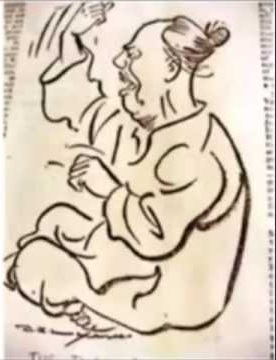
MDR was a vaggeyakara, a musician who also created over 300 compositions in Tamil, Telugu, and Sanskrit. Devoted to his guru, MDR chose as his mudra or mark, Sri Varada Dasa (literally, servant of Varada), which appears in all his compositions.
Thirty-six years have gone by since Ramanathan passed away in 1984. But, MDR’s popularity is today much higher than what it was ever before. From a time when there was hardly any concert of Ramanathan available on record, except in private collections, and the two records mentioned above, now we are in a position to enjoys dozens of Ramanathan concerts in the public domain. More than ten years back, when I was recuperating from an illness, I could download more than 100 concerts from various sites. It took me many years to listen once to all of them just once. Now, I am in the second round.
One of my all-time favourites of MDR is his rendition of Swati Tirunal’s Mohanamayee in Yadukula Kambhoji (see here). He particularly excels, I believe, in ragas where bhakti rasa is prominent. My other favourites of ragas sung by him are in Sahana, Kedaragowla, Bilahari, Shankarabharanam, Anandabhairavi, Shyama, Kedaram, Poorvi Kalyani, and Kalyani, among many others, not to forget Swati Tirunal’s Ata tala varnam in Raga Kambhoji.
Ramanathan was honoured with a Padma Shri in 1974. He also won the Sangeet Natak Akademi Award in 1975. The Sangeetha Kalasigamani Award of the Indian Fine Arts Society followed in 1976. But, the Madras Music Academy’s Sangeeta Kalanidhi, which he apparently coveted much more than anything else, eluded him. He was expected to get in 1983. But, that was not to be, apparently due to politics within the Academy. He passed away a few months later, on 27 April 1984. He was a few days short of his 61st birthday.
While felicitating Ramanathan at the Karnataka Sangita Sabha, after he was awarded the Padma Shri, Justice V.R. Krishna Iyer referred to Ramanathan as an extraordinary institution, one who combined the spirit of an artist and the scientist, the purist and the experimentalist, and that of a singer and a composer. He sang basically for himself and not to win applause. In this musical communion between himself and the infinite nadabrahmam, if it pleases the audience, well and good, but Ramanathan pleases himself. The speeches by Justice Iyer and Ramanathan are available here. TV Gopalakrishnan started his lecture referred to above by observing that as long as Carnatic music is alive, MD Ramanathan will be remembered.
References
These are references in addition to what I have provided earlier as links.
You will find links to a few concerts in this blog by Shankar Krish.
In this blog, are a few explanations of Ramanathan’s music by Prince Rama Varma of the Travancore royal family.
There is at least one book on Ramanathan in English: ‘M.D. Ramanathan: Meaningful Pauses’ by Madhu Vasudevan (DC Books, 2015).
There is a documentary on Ramanathan available here.
A rather unusual film/documentary by Soudhamini, titled ‘Pitru Chaya – Shadows of our Forefathers’, in Tamil, inspired by the life and work of MD Ramanathan, with subtitles in German, is here.
And there are almost endless hours of Ramanathan’s music out there, with more getting added almost every day. It has never been better for fans of MDR.
![]()